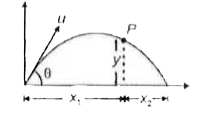Ampelopsis is able to grow on vertical walls by means of
Hooks
Prickles
Clinging roots
Adhesive tendril tips.
The correct Answer is:D
Step-by-Step Solution:
1. Identify the Plant: The plant in question is Ampelopsis, commonly known as the pepper vine or porcelain berry. It belongs to the family Vitaceae.
2. Understand the Growth Habit: Ampelopsis is a climbing shrub, which means it has the ability to grow upwards and cling to vertical surfaces.
3. Determine the Mechanism of Climbing: To understand how Ampelopsis climbs, we need to look at the structures it uses. The options provided are:
- Hooks
- Prickles
- Clinging roots
- Adhesive tendril tips
4. Evaluate Each Option:
- Hooks: While hooks are a climbing mechanism, they are not present in Ampelopsis. Thus, this option is incorrect.
- Prickles: Prickles are also climbing structures found in some plants, but they are not found in Ampelopsis. This option is incorrect.
- Clinging Roots: Clinging roots are typically found in epiphytes, not in Ampelopsis. Therefore, this option is incorrect.
- Adhesive Tendril Tips: Ampelopsis uses tendril tips, which are long, slender, whip-like structures that arise from the stem node. These tendrils are adhesive in nature, allowing them to stick to vertical surfaces and support the climbing habit of the plant.
5. Conclusion: The correct answer is that Ampelopsis is able to grow on vertical walls by means of adhesive tendril tips.
Final Answer:
Ampelopsis is able to grow on vertical walls by means of adhesive tendril tips.
- Hooks
- Prickles
- Clinging roots
- Adhesive tendril tips
- Hooks: While hooks are a climbing mechanism, they are not present in Ampelopsis. Thus, this option is incorrect.
- Prickles: Prickles are also climbing structures found in some plants, but they are not found in Ampelopsis. This option is incorrect.
- Clinging Roots: Clinging roots are typically found in epiphytes, not in Ampelopsis. Therefore, this option is incorrect.
- Adhesive Tendril Tips: Ampelopsis uses tendril tips, which are long, slender, whip-like structures that arise from the stem node. These tendrils are adhesive in nature, allowing them to stick to vertical surfaces and support the climbing habit of the plant.
Ampelopsis is able to grow on vertical walls by means of adhesive tendril tips.
Topper's Solved these Questions
- FAMILIES OF FLOWERING PLANTSBOOK - DINESH PUBLICATION ENGLISHCHAPTER - FAMILIES OF FLOWERING PLANTSEXERCISE - CYG
10 Videos
- EXCRETORY PRODUCTS AND THEIR ELIMINATIONBOOK - DINESH PUBLICATION ENGLISHCHAPTER - EXCRETORY PRODUCTS AND THEIR ELIMINATIONEXERCISE - Check your graps
10 Videos
- FLOWERBOOK - DINESH PUBLICATION ENGLISHCHAPTER - FLOWEREXERCISE - MULTIPLE CHOICE
258 Videos
Similar Questions
Ficus repens spreads ovar vertical walls by means of
View SolutionA plant which can grow over vertical walls is
View SolutionClimbing Perch is able to creep over land by means of
View SolutionIn the given figure for a projectile

View SolutionExocetus is able to leap into air by means of
View SolutionTaenia solium attaches itself to the intestinal wall by means of scolex through its
View SolutionStar Fish is able to crawl over substratum by means of
(a) Arms
(b) Spines
(c) Pedicellariae
(d) Tube feet
View SolutionHookworm holds the intestinal wall by means of
View SolutionA student is able to throw a ball vertically to maximum height of 40m. The maximum distance to which the student can throw the ball in the horizonal direction:-
View SolutionA block of mass M is held against a rough vertical wall by pressing it with a finger . If the coefficient of friction between the block and the wall is μ and the acceleration due to gravity is g , calculate the minimum force required to be applied by the finger to hold the block against the wall.
View Solution
